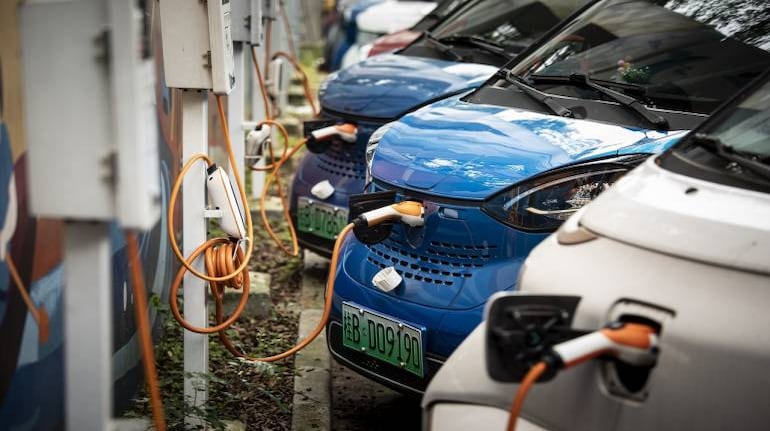In the competitive airline industry, battles for market share benefit consumers through improved offerings. Rivalry leads to changing preferences and expectations, driven by cost advantages. Budget airlines joining full-service ones reduce prices and shift consumer loyalty toward better value. Similarly, the car sector, specifically electric vehicles (EVs), is experiencing a comparable transformation. Sparked by Tesla and Mitsubishi in the late 2000s, EVs initially faced cost challenges despite incentives and efforts to overcome losses.
Today, as the automotive landscape shifts, a silver lining emerges. The dynamics that once hindered electric vehicles’ affordability are gradually fading into the rearview mirror. What has prompted this shift? The driving force, once again, originates from the East as China spearheads the transition towards more accessible EVs.
Electric Vehicle Competition Reshaping China’s Auto Market Landscape and Consumer Confidence
Seven out of the top 10 best-selling vehicles in China for the month of June were electric plug-in models. Tesla’s Model Y SUV has led the sales charts since February, outperforming all its competitors. Even BYD Co.’s Dolphin hatchback introduced just a few months ago, has surpassed well-established rivals in terms of sales volume.

This trend was triggered by an aggressive price competition initiated by Tesla, which led to such intense rivalry that the government intervened. They persuaded automakers to commit to fair competition and to avoid engaging in what was deemed as “abnormal pricing.” However, the commitment to refrain from abnormal pricing was withdrawn shortly after.
Undoubtedly, this battle for market dominance has had negative repercussions. The total number of car sales in China during the first half of the year hasn’t exceeded the levels achieved in 2018, which was 11.8 million units. The official gauge of consumer confidence remains at historically low levels, reminiscent of the 1990s, having plummeted due to the impact of COVID-19 lockdowns in the previous year. The considerable drop in imports during July indicates the persistently weak economic demand.
Manufacturers have resorted to drastic price cuts in their desperate attempts to clear inventories. These discounts have been particularly noticeable in the gasoline-powered car segment.
The shift in Competitive Landscape and Price Dynamics of EVs in China
As the dust settles down, a significant change has occurred in the competitive landscape of electric vehicles. Tesla’s Model 3, which used to be priced twice as high as comparable premium mid-sized sedans like the BMW AG 3 Series, has now become the more affordable choice. Similarly, BYD’s Dolphin is around 5,000 yuan ($693) cheaper than a comparable compact sedan such as Volkswagen AG’s local Jetta variant, the Sagitar, priced at 125,000 yuan.
These price differences are notably influenced by electric vehicles (EVs) being exempt from China’s 10% vehicle purchase tax. BloombergNEF predicts that smaller cars in China won’t achieve subsidy-free price parity until 2025. However, for consumers, what matters most is the upfront cost, and this shift has had a remarkable impact on market dynamics.
Currently, battery electric vehicles and plug-in hybrids make up 37% of total car sales, surpassing earlier predictions. Beijing had initially aimed for 25% of the market to be electric by 2025, a target set at the end of 2019. Merely three years ago, Deloitte’s report, while generally optimistic about EV prospects, had projected that this milestone wouldn’t be reached until the end of the decade.
The rapid growth in the electric vehicle industry appears not just a temporary trend. A good example of this can be seen in the battery manufacturing sector. Electric cars have struggled to compete with traditional internal combustion engine vehicles on price due to the high costs of their power packs and drivetrains, which can be as much as twice the cost of their traditional counterparts. Lowering these costs has largely relied on decreasing battery expenses, a process hindered by the recent inflation in commodity prices, which drove up raw material costs.
Emerging Financial Landscape in the Electric Vehicle Industry
Recent financial results, however, indicate a shift. The largest cell manufacturer, Contemporary Amperex Technology Co., saw a 54% increase in net income for the June quarter compared to the previous year. Similarly, LG Energy Solution Ltd. from South Korea saw its net income quadruple. Analysts predict BYD, another major battery and car manufacturing player, will double its net income in its upcoming report. Panasonic’s first quarter results, aided by a one-time restructuring benefit, were the strongest for any quarter since the 1990s.
These profits seem likely to be sustainable. The price of Chinese lithium carbonate, a key component in cathodes that make up around half of a battery pack’s cost, has decreased significantly since the beginning of the year. This reduction in cost has improved profit margins for major battery manufacturers compared to previous quarters, providing them with more leeway for future competition.
While gasoline-powered vehicles still tend to have a cost advantage at dealerships in most markets, the situation is different in China. The country is already leading the way in adopting electric vehicles, and other parts of the world are expected to follow suit. The transition to electric transport has faced challenges, but it’s now approaching its culmination.
The post EVs Now More Affordable Than Gasoline Cars in China appeared first on TechStory.







0 comments:
Post a Comment